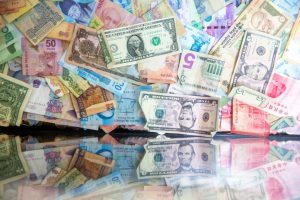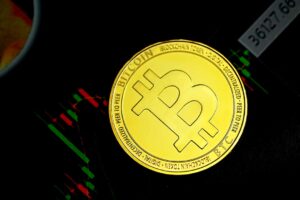Forex Trading Terminology: A Glossary of Key Trading Terms
If you are new to the world of forex trading, you may find yourself overwhelmed by the sheer amount of terminology and jargon that is commonly used by traders. Understanding these terms is crucial to your success as a forex trader, as they will allow you to communicate effectively with other traders and navigate the forex market with confidence. In this article, we will provide you with a comprehensive glossary of key trading terms to help demystify the world of forex trading.
1. Pip: The smallest unit by which a currency pair can change. It stands for “percentage in point” and is usually the fourth decimal place in most currency pairs. For example, if the EUR/USD currency pair moves from 1.1000 to 1.1001, it is said to have moved by one pip.
2. Spread: The difference between the bid and ask price of a currency pair. It is essentially the cost of trading and is measured in pips. For example, if the bid price for EUR/USD is 1.1000 and the ask price is 1.1002, the spread is 2 pips.
3. Leverage: The use of borrowed capital to increase the potential return of an investment. In forex trading, leverage allows traders to control larger positions in the market with a smaller amount of capital. However, it is important to note that leverage also increases the potential risk of losses.
4. Margin: The amount of money that a trader needs to deposit in order to open a position. It is usually expressed as a percentage of the total trade size. For example, if a broker requires a 2% margin, a trader would need to deposit $2,000 to open a $100,000 position.
5. Stop-Loss Order: An order placed by a trader to automatically close a position at a specified price in order to limit potential losses. It is an essential risk management tool that helps traders protect their capital in volatile markets.
6. Take-Profit Order: An order placed by a trader to automatically close a position at a specified price in order to lock in profits. It allows traders to set predetermined profit targets and take advantage of favorable market movements.
7. Long Position: A position that is opened by buying a currency pair with the expectation that its value will rise. Traders profit from a long position when the price of the currency pair increases.
8. Short Position: A position that is opened by selling a currency pair with the expectation that its value will decline. Traders profit from a short position when the price of the currency pair decreases.
9. Liquidity: The degree to which an asset or security can be bought or sold in the market without significantly affecting its price. In forex trading, liquidity is important as it allows traders to enter and exit positions at any given time without significant price slippage.
10. Volatility: The measure of the price fluctuation of a currency pair over a certain period of time. Higher volatility generally presents more trading opportunities but also carries higher risks.
11. Fundamental Analysis: The analysis of economic, political, and social factors that influence the value of currencies. Fundamental analysis helps traders make informed trading decisions based on economic indicators, central bank policies, and geopolitical events.
12. Technical Analysis: The analysis of historical price and volume data to identify patterns and trends that can help predict future price movements. Technical analysis relies on various tools such as charts, indicators, and oscillators to assist in making trading decisions.
13. Currency Pair: The quotation of one currency against another in the forex market. Each currency pair consists of a base currency and a quote currency. For example, in the EUR/USD currency pair, the euro is the base currency and the US dollar is the quote currency.
14. Carry Trade: A strategy in which a trader takes advantage of the interest rate differential between two currencies. By borrowing a currency with a low interest rate and investing in a currency with a higher interest rate, traders aim to profit from the interest rate spread.
15. Central Bank: The institution responsible for managing a country’s money supply, interest rates, and exchange rates. Central banks play a crucial role in the forex market as they can influence currency values through monetary policy decisions.
By familiarizing yourself with these key trading terms, you will be better equipped to navigate the world of forex trading and communicate effectively with other traders. Remember, education is the key to success in forex trading, so continue to expand your knowledge and stay updated with the latest market developments. Happy trading!






